IranWire hosted a webinar on "Religions and Equality of Rights for Men and Women” on January 28, 2021, featuring Parvaneh Sarraf, a Jewish writer and teacher at the Hebrew Academy in New York; Keyvan Hour, a Zoroastrian journalist; Ali Kalaei, a Muslim journalist and human rights activist, Lida Mehrjoo, a Bible scholar; Hossein Khalifa, advisor to the Yarsan Democratic Organization in Norway; Padideh Sabeti, a member of the Baha'i community; and Shadiar Omrani, a sociological researcher on culture and human geography.
Kambiz Ghafouri, a journalist, moderated the webinar on behalf of IranWire. The guests discussed the issue of equality of the rights of men and women from the perspective of different religions that exist in Iran.
If you have a question for a future webinar on anything to do with religious minorities in Iran you can contact us at [email protected].
Iranwire also invites experts in different religions and forms of belief to contact us with their comments about this webinar. You are also welcome to suggest yourself or another for our future religious minorities webinars.
The Equality Approach: Even Within the Traditional View
Asked about the equal rights of men and women in Islam, journalist Ali Kalaei said, "When you say Islam, it must be clear what you mean. Is it in the Quran? Is it the traditions [reported sayings] of the Prophet? Is it in the views of Shia scholars or is it what has been the dominant Muslim popular culture for over a thousand years?
"We need to look at all four of these perspectives and see if we can extract from this context an equality between the rights of men and women. We have more than 350 verses in the Quran directly or indirectly about women. But two or three verses are always questioned and discussed."
Ali Kalaei pointed out that: "In areas such as God's creation, ownership of income, the issue of reward or punishment in the afterlife, and in many other areas, we see full equality between man and woman in the Quran. We have more than 6,600 verses in the Quran of which about 500 are rulings or laws. A number of rulings have been interpreted [in a discriminatory way] based on the traditional readings of the text. There is no doubt about this. But at the same time, today we have the view of [Ayatollahs] Mr. Sanei and Mr. Janati, who mention the equality of the martyrdom of men and women, equality of retribution, full inheritance, the possibility of women holding government positions, and even the authority of women to become sources of emulation [a Shia religious rank] to others. These are the arguments raised by Mr. Sanei, and he is a cleric and a very traditional source of emulation. So it is possible to see an egalitarian approach even within the traditional view."
Tell the Mothers to End the War
Parvaneh Sarraf, a Jewish writer and teacher at the Hebrew Academy in New York, said: "Everything I say today comes from either from the Torah or from the prophets. In the first three chapters of the Book of Creation, where God says, ‘I created human beings ... and there is no difference between them,’ even in terms of laws, it is true that more rules are set for men and fewer rules for women. Since female spirituality is far greater – perhaps because of the maternal womb, not only the emotional womb but also the mother's womb – the status of women has always been high among Jews. Women have a glorious presence in Jewish history. God says in the Torah that I want to create woman and then explains that a woman has more wisdom and discernment.
"A woman is an irreplaceable partner of God. Women are partners with God, not only in literature, but also in the emphasis on life. In the Torah and in the teachings of the prophets, there are women who, not only because of men or instead of men, what women have done has a special merit. Even in the book of Leviticus, when two tribes fight, it says go and tell the mothers to come and fix it."
The Yari Faith: Equal Between Men and Women
Hossein Khalifa, an adviser to the Yarsan Democratic Organization in Norway, said: "Religions are 3,000 years old, 2,000 years old, and some are a little newer. The views of religions are not necessarily implemented the same way today. In Europe we see that they have gone through a 500 renaissance period, and that the commandments that came in the religion of Christ or the attitudes that existed before are no longer practiced today. The same is true in the Yarsan community. What is necessarily the order of the religion may not be implemented today. As a result, when we talk, we have to separate the two."
He says about the laws of the Yari religion: "At the time when the religious books were written, there was a patriarchal society, a feudal system with its own relations. The fact that women in that society did not have equal rights with men is itself a historical and proven fact. When we go back, we have to compare. I hope no one is upset here. Basically, the religion of Yari is in a different world compared to Abrahamic religions. You can easily find many similarities between Judaism, Christianity and Islam, but the origins of the Yari religion go a long way back, although it has been reintroduced in more recent times. It has nothing in common with the Abrahamic religions. Sharia laws such as Islam, Judaism and Christianity are absent in the Yari religion. In general, the principles of religion and the sub-principles of religion in the Yari religion are different from the Abrahamic religions."
"As a result, we do not have jurisprudential laws or Sharia punishments. The religious boundaries are very different; in the religion of Yari, there are moral principles. These moral principles are the same for men and women. The humiliating and discriminatory view of women in other religions does not exists in the Yari religion. In the Yari religion, men and women are made from a single substance."
The Rights of Men and Women in the Christian Community
"We have to understand the God's purpose in creating women," said Lida Mehrjoo, a Christian and a Bible scholar. "Was woman supposed to be created and ignored? This is impossible. There are many passages in the Bible in which Jesus Christ himself defended women, despite the conditions at that time. Of course ... there were the Pharisees, there were the Sadducees, those who did not pay attention to women.
"Jesus Christ did not discriminate; just as God did not discriminate between men and women in the Holy Word. The rights of men and women are fully respected in the Christian community."
The Baha'i Community and the First Girls' School
Padideh Sabeti said of the Baha'i faith: "In the Baha'i faith, equality between men and women is a spiritual criterion. We do not look at it as an ideal. The goal of the Baha'i faith is to bring about world unity and peace. Baha'i writings state that the precondition for world unity and peace is equality between men and women. This is why the issue has been mentioned so much in the Baha’i writings. There is a beautiful example in the Baha'i faith that human civilization is like a bird: women are one wing and men are the other wing. Both wings must have the same power."
"If we look at the case of the Baha'i community, about a century ago, the Baha'is of Iran tried to learn this principle. The leader of the Baha’i community in 1906, Abbas Effendi, the son and successor of the founder of the Baha'i faith, wrote a letter to all Baha'is in Iran to prepare themselves not only to understand but to implement this principle. They learned that in order to implement it there must be equal opportunities for women to be empowered and to show their talents in society. The first Baha'i girls' school was established in 1909 in Qazvin. Twenty girls' schools and training academies, run by the Baha’is, were later opened in Iran."
In the Words of Zoroaster, Man and Woman are Intertwined
"Zoroastrianism is intertwined with Iranian culture because of its antiquity," said Zoroastrian journalist Keyvan Hur. "If you look at the stories in Iranian and Zoroastrian culture about the story of creation, you will see that women, unlike in the stories of the Abrahamic religions, were not created from the ribs of man, or first man and then woman. Man and woman were created equal in the body of a plant and intertwined. After a while, this plant became human and man and woman were created. This is the narration of creation in Iranian and Zoroastrian texts. Then we come to the words of Zoroaster himself, in the Gathas, which do not address the idea of gender; wherever they were mentioned, men and women were together.
"In the Gathas we have to listen to the best sayings and look with a clear mind. Then each of you, man or woman, choose one of these two ways.
"In the same Ghats, when Zoroaster wants to advise his daughter to choose a spouse, he says choose according to your own wisdom. This shows that Zoroaster never wanted to say that marriage is something in which men have the upper hand and choose the women."
When they say “woman,” they mean reproduction
"Even if one believes in religion, but is a scientist, looking at a phenomenon, one should put away his or her religious views and have an impartial view," said Shadiar Omrani, a sociologist of human culture and geography, who attended the meeting as an atheist. "I speak from this point of view. It is a great mistake to think the oppression of one sex, especially women or transgender people, is a religious view or has come from the heart of religion. Religion comes from the heart of societies and their patriarchal structures.
"These structures are based on the need of humanity at that time to live and survive and the continuation of life. Religions come from the heart of these structures and this drive to continue. Human society, in its heart and for its survival, established religions as a way of life, and these become sacred over time."
Shadiar Omrani continued: "Within this structure, where we see the way of life was based on agriculture, when there is a natural hazard, drought and floods and earthquakes, they have to produce more food. When they produce more, then more labor must be produced. This is where the concept of gender comes into play.
"When you think of a woman, you do not first think of a person who has two eyes and one nose. It is associated with the breast, uterus, body, and the reproductive parts of the human being that come to mind. Gender is formed from the human need for reproduction. Previously, these physical differences existed, but because they did not play a social role, for example, the nomads in the hunter-gatherer era did not have to have many children; because the woman who became pregnant could not migrate and hunt, and the child that was born took several years to be able to migrate and go hunting with the rest. The need for us to label women as women, and that women have this reproductive function, came from that part of history. The concepts of sex are social because of their nature. When we look at religions, even if a religion says that we have equality between men and women, this sentence shows that it lives in a society where human beings are not thought of according to their lives but their physical functions. We have to look at it in the context of specific history and geography and specific societies."
visit the accountability section
In this section of Iran Wire, you can contact the officials and launch your campaign for various problems




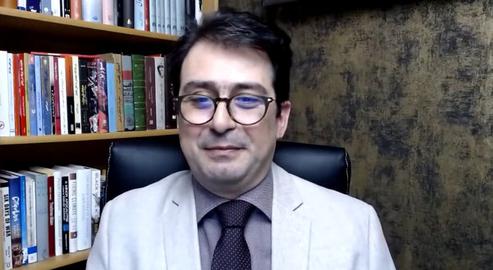
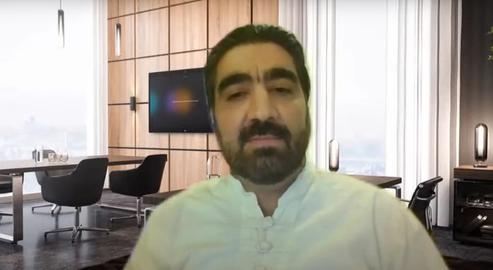

![Hossein Khalifa, an adviser to the Yarsan Democratic Organization in Norway, said: "At the time when the [Yari] religious books were written, there was a patriarchal society." Hossein Khalifa, an adviser to the Yarsan Democratic Organization in Norway, said: "At the time when the [Yari] religious books were written, there was a patriarchal society."](https://static.prod.iranwire.com/_versions_jpg/filer_public/5b/2c/5b2c89fe-4118-4f7c-86d1-80a6323917ab/hsyn_khlyfhjpg__930x510_q85_box-0281463784_crop_subsampling-2_upscale__v516x270__.jpg)
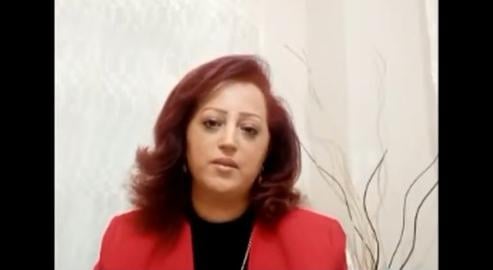
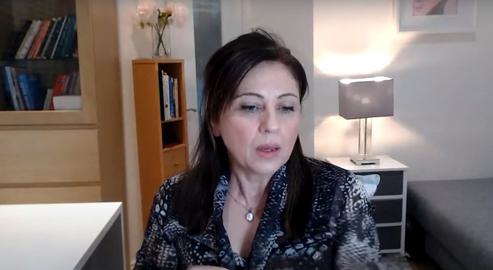
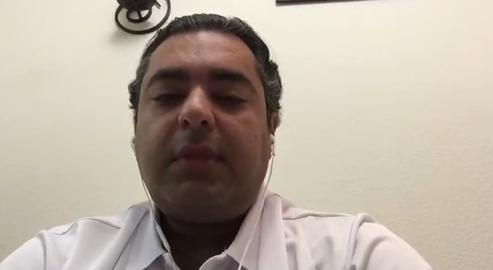





















comments